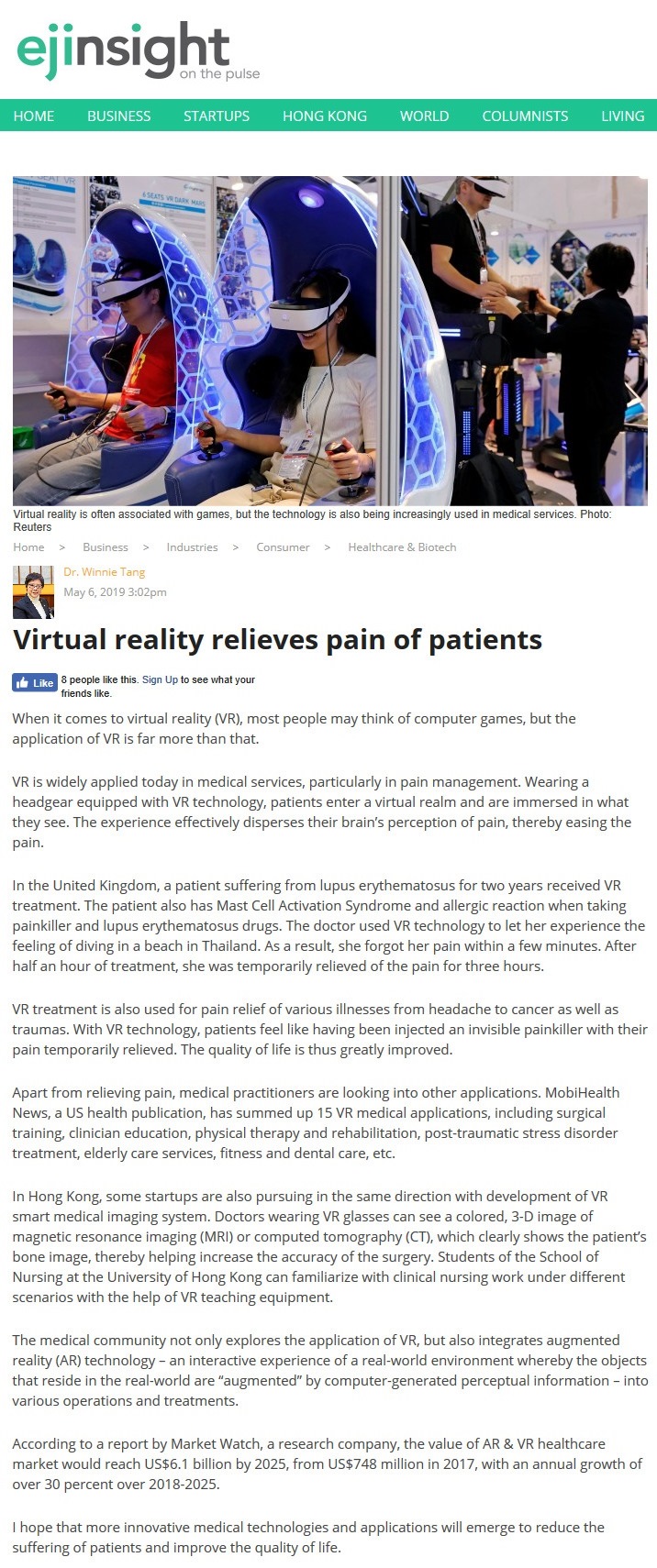網上版請按此

Virtual reality relieves pain of patients
When it comes to virtual reality (VR), most people may think of computer games, but the application of VR is far more than that.
VR is widely applied today in medical services, particularly in pain management. Wearing a headgear equipped with VR technology, patients enter a virtual realm and are immersed in what they see. The experience effectively disperses their brain's perception of pain, thereby easing the pain.
In the United Kingdom, a patient suffering from lupus erythematosus for two years received VR treatment. The patient also has Mast Cell Activation Syndrome and allergic reaction when taking painkiller and lupus erythematosus drugs. The doctor used VR technology to let her experience the feeling of diving in a beach in Thailand. As a result, she forgot her pain within a few minutes. After half an hour of treatment, she was temporarily relieved of the pain for three hours.
VR treatment is also used for pain relief of various illnesses from headache to cancer as well as traumas. With VR technology, patients feel like having been injected an invisible painkiller with their pain temporarily relieved. The quality of life is thus greatly improved.
Apart from relieving pain, medical practitioners are looking into other applications. MobiHealth News, a US health publication, has summed up 15 VR medical applications, including surgical training, clinician education, physical therapy and rehabilitation, post-traumatic stress disorder treatment, elderly care services, fitness and dental care, etc.
In Hong Kong, some startups are also pursuing in the same direction with development of VR smart medical imaging system. Doctors wearing VR glasses can see a colored, 3-D image of magnetic resonance imaging (MRI) or computed tomography (CT), which clearly shows the patient's bone image, thereby helping increase the accuracy of the surgery. Students of the School of Nursing at the University of Hong Kong can familiarize with clinical nursing work under different scenarios with the help of VR teaching equipment.
The medical community not only explores the application of VR, but also integrates augmented reality (AR) technology – an interactive experience of a real-world environment whereby the objects that reside in the real-world are "augmented" by computer-generated perceptual information – into various operations and treatments.
According to a report by Market Watch, a research company, the value of AR & VR healthcare market would reach US$6.1 billion by 2025, from US$748 million in 2017, with an annual growth of over 30 percent over 2018-2025.
I hope that more innovative medical technologies and applications will emerge to reduce the suffering of patients and improve the quality of life.
Dr. Winnie Tang
Adjunct Professor, Department of Computer Science, Faculty of Engineering and Faculty of Architecture, The University of Hong Kong